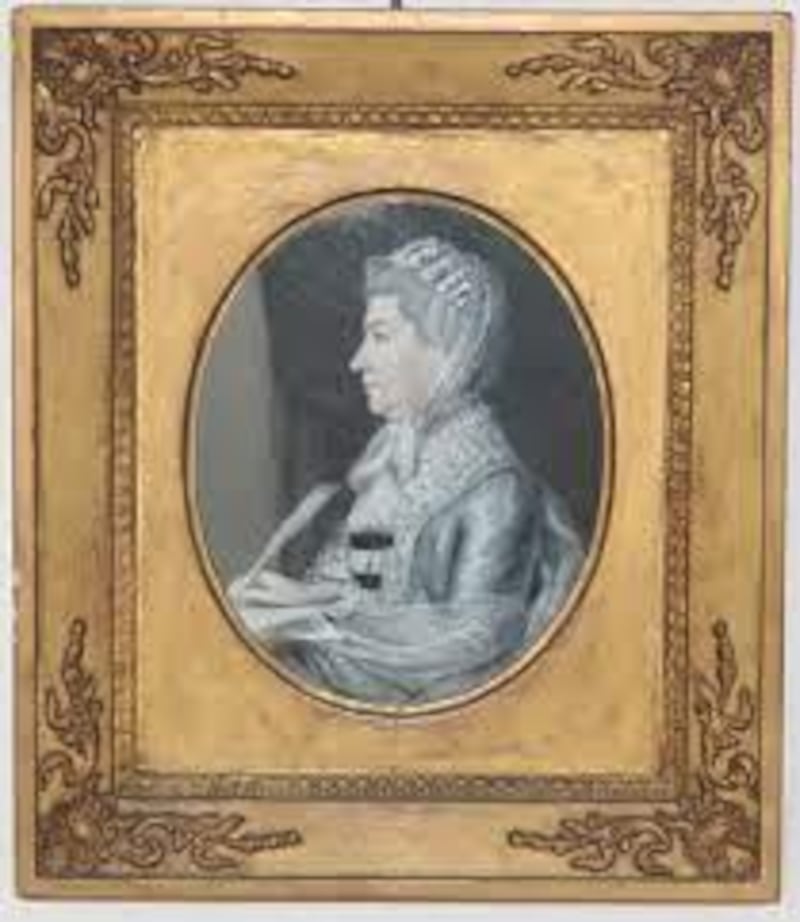Damning testimonies from anguished women who lived in mother and baby homes are not confined to the last century. After the reformist Lady Arbella Denny took over Dublin’s grim Foundling Hospital in 1759 she witnessed an outpouring of grief from women whose personal stories had remained unknown until then.
Their experiences were detailed in heart-rending and poorly written letters. From farm girls, servants and city women, they describe the now all-too-familiar narrative. The shame of “illegitimacy”, the secrecy and the blame. They begged to know what had happened to their infants.
Two centuries ago, professional “lifters”, usually women, were paid to remove “unwanted” babies from the parishes of Dublin and further afield. They carried them, under the cloak of darkness and often six to eight infants in a bag, to the Foundling Hospital, on a site occupied by St James’ Hospital today.
Many infants were maimed with broken limbs from their tortuous journey. A pathetic mewling would be swiftly silenced by diacodium, a narcotic shoved under the tongue, but many perished en route.

There was a discreet system for admission – a turning wheel outside the imposingly high walls of the facility. The baby was laid on the wheel, a bell was rung to alert staff, and when the wheel rotated, the infants were spun into their hellish new home.
Their bodies were thrown into makeshift graves and sparsely covered with quicklime
Here, children up to the age of 12 survived on stirabout, a thin porridge-like meal, that was infested with clock beetles, earwigs and sand. They had no socks or shoes, their feet swelled and blistered in the cold, and their fingers were covered with scabs. But they were still required to work.
Quicklime graves
At the infirmary, badly paid nurses administered flour mixed with water as a substitute for milk to the babies, and the infamous bottle, another drug to keep them quiet. Almost half the infants admitted between 1750 and 1760 died.
Because there were so many, they were buried in groups of up to 12. Their bodies were thrown into makeshift graves and sparsely covered with quicklime. On rainy days body parts lay exposed and rotted in the open air.
When Arbella died in 1792, Dublin's most famous madam, <a class="search" href='javascript:window.parent.actionEventData({$contentId:"7.1213540", $action:"view", $target:"work"})' polopoly:contentid="7.1213540" polopoly:searchtag="tag_person">Peg Leeson</a>, closed her brothel as a sign of respect
A 1758 report to the Irish House of Commons catalogued the deplorable conditions, systematic cruelty, starvation and neglect in the Foundling Hospital.
Meanwhile, in her home at Peafield Cliff in Blackrock Co Dublin, Lady Arbella Denny read the report with revulsion. The Kerry native seized what she saw as her mission and demanded to be allowed take over the hospital.
Arbella, a privileged, titled and well-connected Protestant, got her wish. And under her leadership, trained nurses, enhanced care of infants and cleanliness were central to success.

Arbella ordered a clock – now in Farmleigh House – to sound every 20 minutes as a reminder that the babies needed to be fed regularly. The Royal Dublin Society gave her an annual grant of £30 to help instruct the children in lace-making.
Between 1760 and 1770, of the 8,726 infants in the nursery, 1,990 died but 6,721 survived.
Encouraged by her success at the hospital, and in response to the numerous letters from mothers searching for their babies, Arbella opened the first Magdalen Home in Dublin at No 8 Lower Leeson Street, in June 1767, now site of the Sugar Club venue.
‘Fallen’ women
Access to the home was purely voluntary – women were not forced to stay there. They were given new names and new clothes and taught new skills so they would be able to seek employment. On leaving, they were given money to help finance a new life. The youngest recorded resident was 12. The oldest was in her 30s. Most were ordinary girls who had “fallen”.
The home was a female-led venture. Charity sermons paid for the enterprise. And when Arbella died in 1792, Dublin's most famous madam, Peg Leeson, closed her brothel as a sign of respect for the woman she had secretly funded for years even though few who entered the Magdalen Home were prostitutes.
However, after her death, Arbella’s legacy was swiftly forgotten. Mirroring the movement of the turning wheel at the Foundling Hospital, conditions reverted to their original state.
Of the 2,180 babies numbered in 1790, 2,087 died or were unaccounted for.
Arbella's, progressive for its time, Magdalen Home would also change. A move to Eglinton Road would see the Magdalen Home renamed as Denny House, one of the institutions listed for investigation by the mother and baby home commission.
What had been Arbella’s vision – as an earnest pioneer on behalf of women and babies – would be corrupted again into a place of sorrow and shame for the next 200 years.












